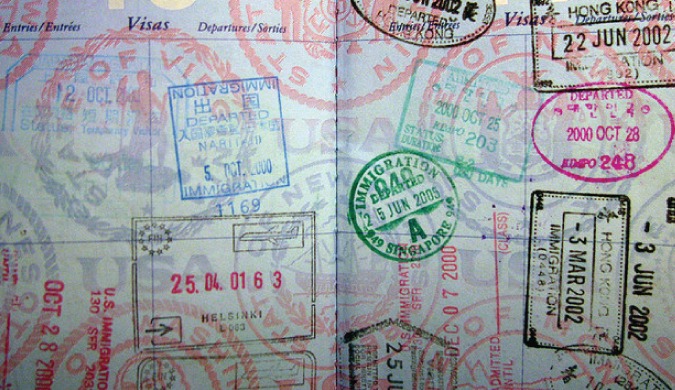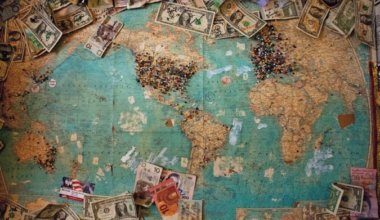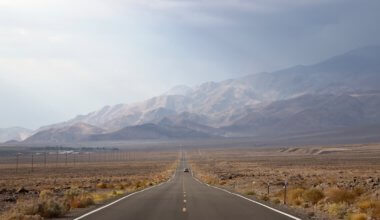 Last Updated: 01/10/2018 | January 10th, 2018
Last Updated: 01/10/2018 | January 10th, 2018
On my first round-the-world trip in 2006, I planned everything out beforehand. I knew where I was going, staying, for how long, and how I would get there. And then half-way through I ditched the plan and went with the flow. Over the years, how I plan my travel has changed. Now, I’m a last-minute planner and rarely travel with any set itinerary. Years of long-term travel has made me much better at going with the flow. When plans change or things go wrong, I just roll with it. Life on the road works out in the end and mishaps are just part of the journey.
Traveling without a plan gives you incredible flexibility. Since nothing is booked far in advance, you aren’t tethered to one itinerary and can pivot to something different when you change your mind or something better comes along. Letting the day unfold randomly can lead to exciting and unplanned adventures. I changed my plans to meet a friend on an island in Thailand and stayed for a month. Another time, I met a girl in Cambodia, delayed my departure a few days, and we ended up traveling and dating for five months.
I wouldn’t have had those or many other experiences if I had rigidly kept to my planned itinerary and schedule.
However, most new travelers are the opposite – they over plan their trips. Their entire route is scheduled, sometimes down to the specific hour. Two days here, three days there. I understand why people do that. Countless itineraries appear in my inbox from people who are attempting to see all of Europe in three weeks or Southeast Asia in two months. When you have limited time, you want to see as much as possible. You don’t want to waste a single second. That’s true whether you have two weeks or two months of travel ahead of you. Few people travel forever, so there is always a finish line that looms large. It’s a race against the clock.
But in travel, less is more. Spending more time in one place allows you to get a better feel for the rhythm of life. It enables you to visit at a more relaxed pace, see more than just the highlights, and open up your schedule to the happy accidents of travel. Slowing down can make a huge difference.
As Buddha said, the middle way is the right way, and the middle way for traveling is to simply plan your general route and fill in the blanks along the way.
When I first create itineraries to new destinations, I start out overzealous and try to cram everything in. Then I take a deep breath, realize it’s unrealistic, and revise my plan to outline the one to two things I want to see each day and space everything out. It’s an important lesson to learn.
I think the best “trip planning” is to figure out the general path you want to take, book the first few nights of your trip, and let your travels unfold from there. Keep moving until you want to stop or change directions. This way you are never locked into a certain place if your feelings change.
Go with the flow.
There’s no magic bullet to planning a route, whether it’s through a city or a country. Simply move forward in a continuous loop and avoid doubling back. That way you can keep your transportation costs down and you know where you’re going, but your plan is flexible enough that you can stay in your destination longer or leave sooner if you choose.
The one thing that every traveler will tell you is that unexpected things happen on the road, throwing a monkey wrench into the best-planned itinerary (from breaking your leg or losing your camera, to staying longer in one place or jetting off somewhere new with people you’ve just met). If you aren’t flexible, you’re going to stress out over any changes to your itinerary. You’ll rush from attraction to attraction in a tense state while never really letting yourself enjoy the moment because you’ll be too worried about missing what’s supposed to come next.
So how would I tell you to plan your trip?
Step 1: Plan your dream trip in as much detail as you want.
Step 2: Cut half the stuff.
Step 3: Come up with your list of your top two to five things to do in each of the destinations you have left.
Step 4: Take that list and forget about everything else. Do the things you really want to do and let serendipity fill in the rest!
The best travel plan gives you a good idea of where you are going with the flexibility to adapt to changes on the road. It’s important to give yourself wiggle room for places you like or dislike, or if you get burnt out and just want to take a travel time-out and relax for a few days. Decide where you want to go and what you want to see, but don’t tie yourself down to too many dates.
Traveling without a plan is a great idea. Traveling with only a semblance of one is even better.
Related travel planning articles:
Book Your Trip: Logistical Tips and Tricks
Book Your Flight
Find a cheap flight by using Skyscanner. It’s my favorite search engine because it searches websites and airlines around the globe so you always know no stone is being left unturned.
Book Your Accommodation
You can book your hostel with Hostelworld. If you want to stay somewhere other than a hostel, use Booking.com as it consistently returns the cheapest rates for guesthouses and hotels.
Don’t Forget Travel Insurance
Travel insurance will protect you against illness, injury, theft, and cancellations. It’s comprehensive protection in case anything goes wrong. I never go on a trip without it as I’ve had to use it many times in the past. My favorite companies that offer the best service and value are:
- SafetyWing (best for everyone)
- Insure My Trip (for those 70 and over)
- Medjet (for additional evacuation coverage)
Want to Travel for Free?
Travel credit cards allow you to earn points that can be redeemed for free flights and accommodation — all without any extra spending. Check out my guide to picking the right card and my current favorites to get started and see the latest best deals.
Need Help Finding Activities for Your Trip?
Get Your Guide is a huge online marketplace where you can find cool walking tours, fun excursions, skip-the-line tickets, private guides, and more.
Ready to Book Your Trip?
Check out my resource page for the best companies to use when you travel. I list all the ones I use when I travel. They are the best in class and you can’t go wrong using them on your trip.


